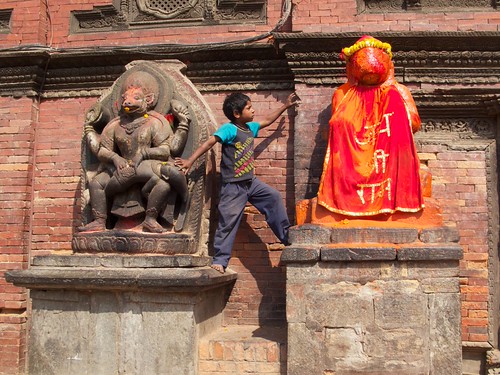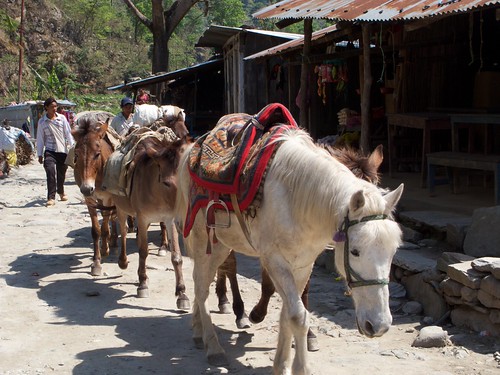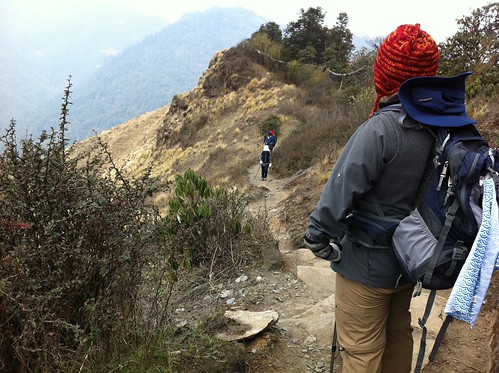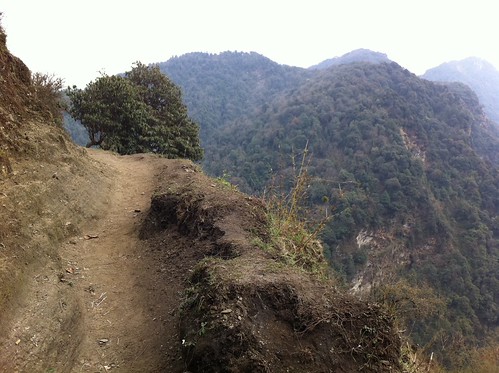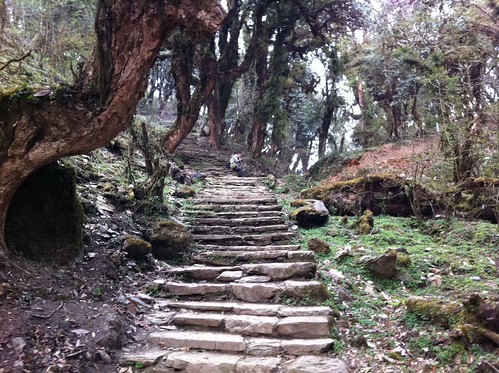A few words from a professional procrastinator
A test of faith
I’ve been preoccuped this week with recent developments back home which make what I am doing probably illegal in my home country. Which makes me even more compelled to blog about it.
The Philippine government has enacted into law Republic Act 10175 or also known as the “Cybercrime Prevention Act of 2012”. Originally drafted to crimminalize certain offenses made via digital means such as identity theft, spamming, cybersex and child pornography. There are no previous laws tackling this issue in the digital realm which makes these pretty much updating dating the current laws. However a line has been included that many find disturbing and that is the libel clause.
I’ll save you the trouble and fast forward through the pdf link above to page 7 on the pdf or page 13 of the scanned pages and read section 19.
Sec. 19. Restricting or Blocking Access to Computer Data – When a computer data in prima facie found to be in violation of this Act, the DOJ* shall issue an order to restrict or block access to such computer data.
*Department of Justice
This basically means, they don’t need a court order to shut the internet, SMS, mobile phones and anything that is in a digital medium down if they see fit. Not to mention that the penalties for commiting online libel is harsher than traditional media libel (newspapers, radio, tv) which ranges from 1 Million pesos (roughly USD $25,000) and/or 12 years in prison.
With this in mind I’ll refer to the 1987 Philippine Constituition which states in Article III, Section 3 and 4,
Section 3. (1) The privacy of communication and correspondence shall be inviolable except upon lawful order of
the court, or when public safety or order requires otherwise as prescribed by law.
(2) Any evidence obtained in violation of this or the preceding section shall be inadmissible for any purpose in
any proceeding.Section 4. No law shall be passed abridging the freedom of speech, of expression, or of the press, or the right of
the people peaceably to assemble and petition the government for redress of grievances.
I’m no lawyer but it’s clear that there is something seriously wrong with the law.
Ten motions for a temporary restraining order have been filed before the Supreme Court and they will meet on Tuesday to listen to the arguments. The law took effect yesterday.
So you can imagine what took place. My fellow countrymen were livid. They went to the streets in protest and changed their facebook profile to black in protest.
http://beta.taopo.org/isyu/10/02/2012/online-protests-become-offline-actions-against-ra-10175
It has been picked up by the foreign press.
http://globalvoicesonline.org/2012/09/19/philippines-anti-cybercrime-law-threatens-media-freedom/
https://www.eff.org/deeplinks/2012/10/dark-day-philippines-government-passes-cybercrime-act
http://sg.news.yahoo.com/philippine-websites-hacked-over-cybercrime-law-175219087.html
http://www.bbc.co.uk/news/technology-19810474
http://www.cnn.com/2012/10/04/world/asia/philippines-cyber-law-protest/index.html
Let’s go even further that the Philippines joined the Open Government Partnership in 2011.
It seems that government and politicians can’t put a stop to the discussion going on about them and the way they behave and perform in goverment and that their only recourse is to just put a lid on it and put the entire country back in the stone ages.
Just recently, a senator was caught plagiarising his speech by the internet community and claimed he did nothing wrong. It was made worse as he did it again a week later. But this time, translating a speech delivered by Sen. Robert F. Kennedy in 1966 into Filipino. Oh yeah, he put the libel clause in.
Now lawmakers are quick to go on camera and state that “if” elected, they will change that provision. It’s an election year next year and they need the votes of the public.
Let’s look at the numbers.
So far, most of the protests I’ve seen are on Facebook and I’ve shared a number of them.
According to socialbakers.com

Facebook has almost 30% of the general population of the Philippines or almost everyone with an internet connection.

With more than half of them are eligible voters. How many are registered voters is another issue but is it enough to change their minds?
Now for the interesting part. Now what?
Sharing Facebook is nice and all but in the end we are all just armchair activists. Sharing, liking and retweeting things we believe our readers and followers should know. But will it change anything?
This is an interesting turning point for the country. This internet generation has grown up used to the freedoms that my parents didn’t have between the years 1972-1986 when the country was ruled by a dictator. I know my history and what it took to get that freedom back. I am curious if this generation will stand up for their rights.
This is a challenge to our freedom and to our internet. The internet must be free and it is up to us to keep it that way. The government has much to learn from the internet. I would like you to watch ITP Professor Clay Shirky speaking at TED Global this year on what government can learn from the internet and it’s users.
The day I almost died or how I learned to never give up.
In 2006, I was inspired the team who went up Mt. Everest with the Philippine Everest Expedition and wanted to go there too. When they came back, they said it was the most amazing place they have every seen.

Abner Mercado and Val Cuenca at Everest Base Camp
Photo by Val Cuenca
So in 2011, after I learned I got accepted into ITP, my father and fellow photographer Patrick Uy decided to make it happen. We had been aware of the expedition in 2006 and 2007 since we were involved in it one way or another. Patrick contacted the same trekking company the expedition used.
Henry and Emma Pariyar of International Adventures Treks and Expeditions handled the entire journey. We took a Cathay Pacific flight from Manila to Hong Kong and switched to a Dragon Air flight from Hong Kong to Kathmandu via Dhaka. The plane trip took almost the entire day and we arrived in Nepal at midnight.
We were greeted by Henry and Emma at the airport. We got our visa upon arrival and headed to the hotel. During the dry season, Nepal undergoes 8 hour power interruptions. Meaning the city was very dark and I do mean very dark. Bull mastiffs run free through the streets and it seemed that a map would actually be useless in navigating the streets.
Essential things to bring to Nepal. A flashlight, which my father lost 2 days later 😦 so we had to buy a new one. There is excellent mobile signal in the city but up in the mountains, you’ll only get them in big towns. I’ll get to that later.
Our journey took us 7 days over the Annapurna range of the Himalayas. It may not be Everest Base Camp (that takes at least 10 days) but enough to take pictures.
We rode a van from Kathmandu to Bandipur and stayed overnight. It gave us a glimpse on what was to come.
From Bandipur we headed to the lakeside town of Pokhara where we would leave our belongings before heading to the mountains.
It was another van ride to the start of the trek at Nayapul. Here we met with our guides and porters and set off just before 9am.
It’s here in Birethanti (elev. 1065m) where supplies are replenished and brought up the mountains on the backs of mules. You need to step aside when they pass since they have a tendency to bump you off the cliff if you’re in the way.
This is also the last part where vehicular traffic can pass since the roads are still being built.
Since electricity is something of a rare commodity up in the mountains, I had a solar panel on my backpack as I went on the trail slowly charging my iPod or iPhone. It wasn’t much but enough to help me have some touch with civilization with my playlist.
Don’t fall into the water. There are leeches.
Just beyond the structures up there is where we would be staying for the night.
We arrived at Tikhedhunga (elevation 1525m) a little past five and had dinner and slept.
Traditional Nepali dish.
The following day was going to be the killer. But we didn’t know it then. We set off at 6am for Ghorepani (elevation 2775m).
The trek to the next town was tough. Ulleri was a steep acent of 1,300m.
We had only hit part of Ulleri by lunchtime and it would be difficult to make it to Ghorepani by sunset. Our trek was not made any easier by the afternoon rainshowers. We were getting really tired. By 5pm we were still at least an hour away from Ghorepani and we were basically out of energy bars, water, eletrolytes and warm clothing. It was hot in humid during the day and it started to snow as the sun went down. Our guides were worried that I might be suffering from altitude sickness. But I wasn’t. Each step was painful and my body was telling me to stop. Stop here for the night. It’ll be ok. Apparently we were all in the same predicament. We were all just waiting for someone to say it. But nobody did.
As the sun went down the rain slowly turned into snow and at this point we didn’t have flashlight. There was nothing else in my mind but the next step. Each step was closer to a hot meal and a bed. During the trek, all sorts of things could fill your mind. There was the view, the odd thing that you would see along the path and checking on how much water we had left. But not at 6pm in the snow. We finally reached Ghorepani just before the sun went completely down.
Last photo for the day. Entrance to Ghorepani.
Then I learned that it was another 30-45 minutes uphill to reach the lodge for the night. Crap.
I was feeling much better now that we reached the town and our goal for the day was within reach. But going through a town in almost total darkness with the exception of the moonshine that guided our path from time to time while it hid behind the clouds. Since it was really dark I stepped on crap. Literally. Oh well, washed my shoes before heading indoors. But it was something to laugh at and bring my mood up as I was already physically drained.
I reached the inn by 7pm and immediately went for my winter gear. I then suggested that we stay an extra day in Ghorepani since it was very evident on our very tired faces that there was no way we could climb another 1k M the following day.

Sunrise showed us exactly where we were. Annapurna South filled our window and it was spectacular.
Our living conditions for the past few days have been sparse but I was confortable enough. Though it was plywood, sleeping bag then me. This was one of the few places where we had a thin cushion.
Annapurna South
The rest day did us a lot of good and set back on the path the next day. This time it would take us along the mountain range which was a little easier than the day before but not that easy.
Highest point on this journey. My father in the background.
As you pass, put another stone for the next traveller.
Hot in the morning, freezing in the afternoon until the night.
We’re suppposed to trekking somewhere here.
Solar water heaters up in the mountains.
Up and down the mountains and edges.
Going through the forest isn’t easy especially when the path you’ve been walking on suddenly ends in a cliff. Look on the far end of this photo and see the steps that we still have to climb. Essentially we have to climb down to the river, cross the river and climb back up over 1000 steps.
Over the river
Up and up again.
Find a way around this boulder.
More steps.
I’d say the walls were really paper thin. I could hear everything that was going on on our floor. Seriously. But we were gifted by this view the next day.
Breakfast was always simple for me in the morning. Cup of coffee, toast and peanut butter. No eggs for me. Allergies. Peanut butter I carried all the way from Manila.
The guy brought up apples from the city and is selling them to our innkeeper in red. The other ladies in black jackets are from the Three Sisters Trekking company.
Wild bull mastiffs just lounging under the sun.
This is is a short trek to Ghandruk.
Holy cows.
We spent the past few days going up, now it’s all the way down.
Entering the town of Ghandruk was a bit of a shock. It is the most developed town in all of Nepal. It’s home to the Ghurka warriors who are known for their fearless and vicious fighting skills. Just recently, a Ghurka warrior on vacation took on a gang of 10 train robbers in India with a knife and won.
The town has it’s own hydroelectric plant which means there are no power interruptions here.
Amazing! There’s still light and we made it to our inn!
Best inn on the trek by far.
They purify their own water. Bring your own bottle, no bottled water. Up in the basket next to it are around 5-6 iPods and iPhones. This is the most amazing inn ever.
The innkeeper is well educated and very modern. All the trash you bring up must go down with you if it’s not biodegradable.

Later that afternoon a mule fell in an accident. Vultures were circling above waiting for it to die.
Note the solar panels, it’s just for the hot water. That means no hot water at night.
View of the fishtail mountain at dawn.
Mailbox in Ghandruk.
This was our last day on the mountain and it was all downhill. Like 3km downhill.
Mules taking a detour so they don’t have to pass by us.
This is how chickens are brought up.


The one cat we see up in the mountains.
Road being paved. I wonder how long will it take to build?
Almost feels like a painting.
Mule train
Looks familiar.
OMG! It’s the bridge where we started all of this!
The last mile.
You need to check back in to make sure you went down the mountain.
Fellow Belgian trekker had to ride above their bus since there was no more space inside.

Taking the plane back to Kathmandu.
Luggage at the tarmac.
Luggage loaded.
Back in Pokhara and having a Korean meal.
Hmm…
Back in Kathmandu.
bike share?
More sightseeing in Kathmandu
Coca-Cola ad.
Pots for drying.
Waiting for our Dragon Air flight to Hong Kong.
This trip was amazing and I wish I could do it again to Everest Base Camp. Really big thanks to everyone my dad, Patrick, Evelyn and Timmy, Henry and Emma, Dipendra and Nim. I promise I’ll come back. I’ll just need to train going uphill.
Hanami
Sakura in Fukuoka
Hanami or flower viewing is commonly associated with the act of viewing cherry blossoms.
I think I’ve found my idea for my Computational Cameras final. It has an intresting history that dates back to the 18th century on how a single flower can symbolize extreme beauty and a quick death due to the fleeting nature of the cherry blossoms.
Cherry trees at Nagasaki ground zero
I’ll be implementing these in my final project by replacing it the lifespan of the cherry blossoms as you move through a given space.
So for the next few weeks I’ll be spending time at the Brooklyn Botanical Gardens to shoot pictures and video. I’m not sure yet if the petals will be falling but if not. I’ll attempt to recreate them in Processing.
Help me decide
What to do for my finals?? I have a bunch and need to narrow them down and focus on ONE project for the next two weeks.
1. Enhance the AR project.
I would actually move the AR codes into playing cards and laying them down the table would project different words. I was thinking of making it a language learning tool. By arranging them in the correct order/ syntax, you will get the english translation.
OR
haptic interface via IR, same as above but a touchscreen keyboard on plexi.
OR
Hang a bunch of AR codes around and when a camera or phone is pointed at it, it will display a “virtual forest” with vines or branches linking between the AR codes.
2. Enhance the midterm project.
Instead of putting random unrelated images as I walk through space using the kinect. I’d like to project an actual scene that would give you the illusion of actually walking through space.
OR
Generate an interactive scene that would respond to your proximity and facial reactions much like a camera enabled Eliza psychotherapist bot.
http://en.wikipedia.org/wiki/ELIZA
3. I’d like to make a digital camera obscura box. But it seems to me that the illusion is lost when it moves to the digital form compared to the actual physics involved in projecting it.
http://ngm.nationalgeographic.com/2011/05/camera-obscura/camera-obscura-video
So I’m reaching out to the class to help me decide.
Cambria to Monterey
Cambria to Monterey: 103 miles
I woke up to a foggy Monday morning in Cambria but Tim the innkeeper informed me that the fog would blow away by 10am. I had coffee and some chocolate chip muffins I packed myself and headed to San Simeon and Hearst Castle.

The road footage of the previous day was garbage so I made a few modifcations to the camera setup and it worked great. It was a short 10 miles to Hearst Castle so I got there on the very first tour of the day.
Hearst Castle and William Hearst is the inpsiration for Orson Welles’ classic, Citizen Kane. Sadly I missed the evening screening of the film at Hearst Castle last Friday but today will do.
The castle was donated by the Hearst Corporation to the State of California in 1957 and is now managed by the California State Parks. They do still own the surrounding land where Black Angus cows graze along with zebras who are descendants of the exotic animals that Hearst once populated the area with.
The house was a continuos project of Hearst and architect Julia Morgan.
I’ll save the details about the tour for the documentary but on with the road. It was 10am by the time I got back to car and started to set the car back up. Not far from San Simeon are Elephant Seal colonies where I stopped by and took some pictures and video before I set on for the challenge of the day. Big Sur.
Big Sur is the most exciting and deadliest part of California 1 that requires you to check road conditions before setting off as there could be landslides. The fog had moved inland and roads were dry and the sun was out which made for an excellent day to drive up.
The road winds it’s way along the California coast with tight switchbacks and hairpin turns with a suggested speed limit of 20mph. But with the car I was driving I could make the turns at 35-40mph.
Throughout this part of the trip, there were three times where traffic was controlled due to construction. One of the things to keep in mind about the highway is your rearview mirror. There are numerous turnouts for slower cars to use to let faster cars through. Sadly, many drivers don’t know this thus making the trip a lot longer than it should.
After passing these vehicles eventually, it was now time to take note of the damage on the road. Orange traffic cones line the edges of highway marking places where rock slides had destroyed the road recently and taking the steel barriers with it. A huge bridge construction effort is underway thus making us wait for at least 15 minutes before we could pass.
Just last year, the road was closed for seven months due to damage. It’s a sad reality that such a beautiful road is being reclaimed by the sea.
The Mazda RX-3 2012 base model worked perfectly. The front wheel drive of the car enabled ease of turning the corners and just having fun.
California 1 is not a place you would want to drive during the summer. The road is filled with people going back and fourth along with numerous bike tourers. Most bike tours go from north to south which to predominantly downhill coupled with favorable tail winds and the coast on your side, thus making a perfect ride. Being on a bike also provides the opportunity to experience the road like no other. You can stop in the middle of Bixby Bride and enjoy the view. Something you can’t do in car. It’s something I’d like to do but I’ll get into shape first before trying this out. Michael Ballard over at crazyguyonabike.com has a great journal on his trip down the coast in 2010.
I hit Carmel-by-the-Sea and Monterey around lunch time and proceeded to Pebble Beach. Pebble Beach is home to the famous 17 Mile Drive and Golf Course. It’s a private area thus requiring all vehicles to pay $9.50 to take in the scenery. Bikes get in for free. No motorcycles though.
The views here are amazing as the Pacific waves crash on the jagged rocks of Pebble Beach. Pebble Beach is also home to the world’s most photographed tree. The Lone Cypress tree which is estimated to be 250 years old is also the trademarked tree of Pebble Beach thus making it illegal to photograph the tree for commercial purposes. The tree is actually being held in place by steel cables to prevent it from falling into the ocean. At least the cables aren’t that visible.
I drove into the tourist area of Moneterey and checked in for the night.
Not far from Monterey is Salinas, birthplace of John Steinbeck and home to the Laguna Seca Racing circuit. But it is over in Monterey where Steinbeck made famous the Cannery Row, where fishing boats that netted the waters of Moneterey Bay docked and sardines were packed until over fishing killed the industry. Now all that remains is a tourist row and the Monterey Bay Aquarium.
I’ve never been to the aquarium before so I made it a point to visit on this trip. It’s not Sea World, but the collection is still amazing. Their collection of jellyfish and sea horses is just stunning. The aquarium highlights the biodiversity of the Monterey coast (which by the way is a protected area that stretches all the way to San Simeon).
After I had cioppino for lunch the rain and the wind started to come in. I then made my way to San Francisco up along the 1 since it was a weekday and I knew the traffic that was ahead of me as I drove up the peninsula. This version of the documentary will end here but I will keep adding on to it as I come across more stories and information about the coast.
Tokyo 1954
Notes to follow.
SHARE THIS
my flickr stream
Recent Posts
| M | T | W | T | F | S | S |
|---|---|---|---|---|---|---|
| 1 | 2 | 3 | 4 | 5 | 6 | 7 |
| 8 | 9 | 10 | 11 | 12 | 13 | 14 |
| 15 | 16 | 17 | 18 | 19 | 20 | 21 |
| 22 | 23 | 24 | 25 | 26 | 27 | 28 |
| 29 | 30 | 31 | ||||
Categories
- anime (9)
- Comics (4)
- CommLab:2D (6)
- Computational Cameras (12)
- Connected Documentary (4)
- gadgets (62)
- ICM (5)
- ITP (8)
- mobile (80)
- movies (10)
- PCOMP (19)
- Sensor Workshop (1)
- stuff (40)
- travel (24)
- TV (3)
- Uncategorized (12)
- videogames (141)
TAGGED
1up 2010 afa09 amazon animal crossing anime apple arduino atlus bioware blizzard CERN commlab DanO dlc DnD dragonage dragon age E3 ffxi FFXIII FFXIV Final Fantasy finals food Gran Turismo guitar hero homework iphone ipod ITP iTunes japan kindle kinect Kotaku LED LHC macao macau macworld mass effect MGS MGS4 MMO MMORPG mobile music nbc NDS nintendo nyu pc PCOMP processing PS3 PSN psp racing ramen rants Rock Band RPG rumor rumors sega Singapore Sony Square-Enix travel up weekend Wii xbox xbox360Archives
- December 2012
- November 2012
- October 2012
- May 2012
- April 2012
- March 2012
- February 2012
- January 2012
- December 2011
- November 2011
- October 2011
- September 2011
- July 2011
- May 2011
- April 2011
- February 2011
- January 2011
- December 2010
- November 2010
- October 2010
- September 2010
- August 2010
- July 2010
- June 2010
- May 2010
- April 2010
- March 2010
- February 2010
- January 2010
- December 2009
- November 2009
- October 2009
- September 2009
- June 2009
- May 2009
- April 2009
- March 2009
- February 2009
- January 2009
- December 2008
- November 2008
- October 2008
- September 2008
- August 2008
- July 2008
- June 2008
- May 2008
- April 2008
- March 2008
- February 2008
- January 2008
- December 2007
- November 2007
- October 2007
- September 2007
- August 2007
- July 2007
- June 2007
- May 2007
- April 2007
- February 2007
- December 2006
- November 2006
- September 2006
- August 2006
- July 2006
- June 2006
- May 2006
- April 2006
- March 2006
- February 2006
- January 2006
- December 2005




